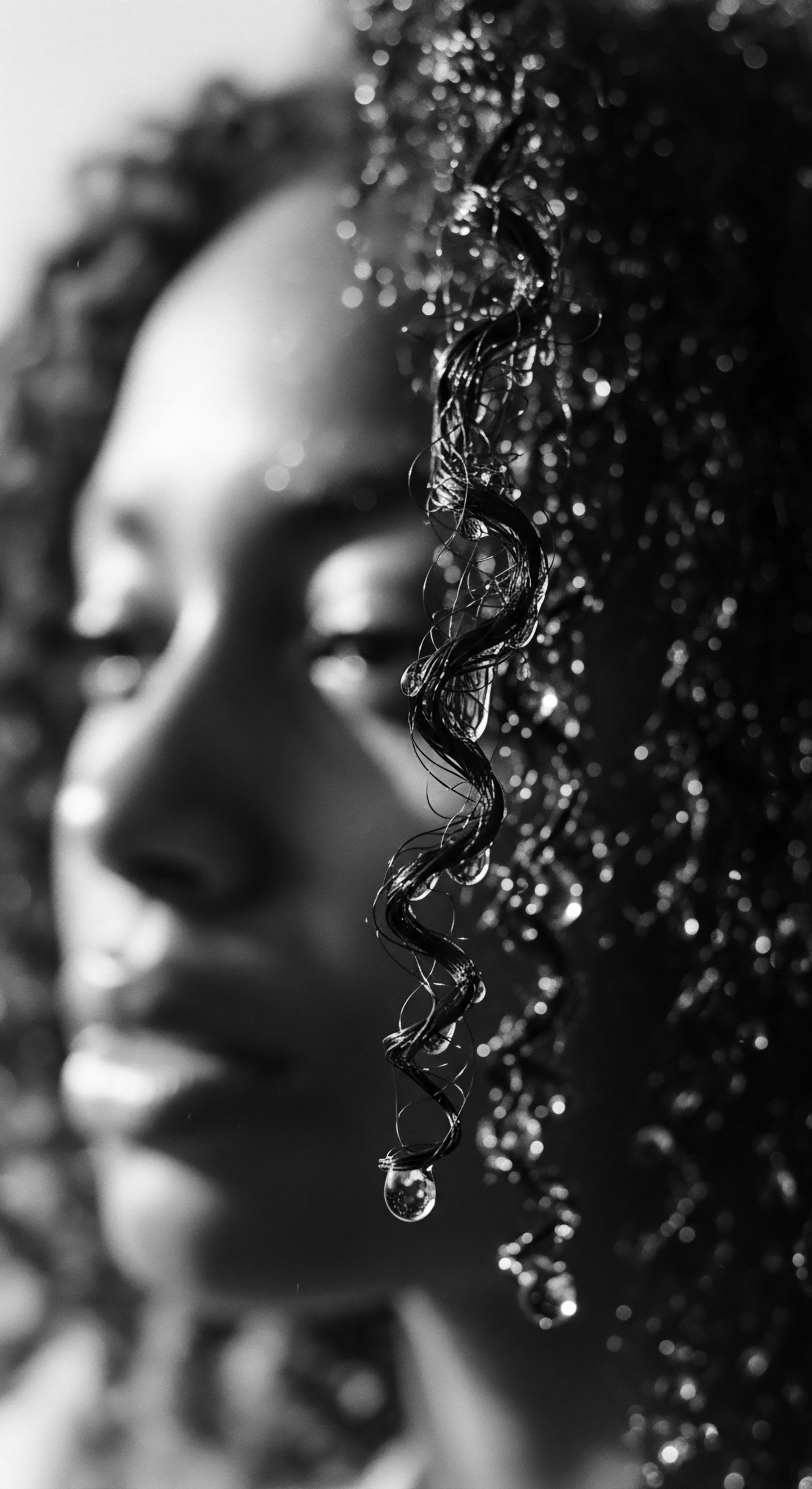
Fundamentals
The core meaning of “Water Cleaning” in the context of hair care refers to the multifaceted process involving water to purify, refresh, and prepare the hair and scalp. It encompasses both the physical removal of impurities and product accumulation, alongside the deeper influence water exerts on hair’s intrinsic structure and overall vitality. While seemingly straightforward, the essence of water cleaning transcends a simple rinse; it is about understanding how this primal element interacts with hair fibers, particularly those with textured patterns, which possess unique needs and characteristics. For individuals new to this realm, a foundational appreciation for water’s role helps in developing intentional hair care practices.
A significant portion of a hair strand, approximately 10-25%, consists of water, a fact underscoring its inherent importance for maintaining healthy hair. This water content is responsible for the resilience and bounce found in vibrant hair. The intercellular bonds within the hair, composed largely of ceramides, are capable of absorbing substantial quantities of water, allowing the hair’s outer cuticle layer to function correctly.
When hair lacks sufficient moisture, it can become dry, brittle, and prone to damage, leading to concerns such as split ends and increased breakage. Therefore, the most basic interpretation of water cleaning involves providing hair with the necessary hydration it needs to retain its strength and elasticity.
Water cleaning, at its most fundamental, recognizes water as an indispensable medium for both purifying the hair and scalp, and maintaining the hair’s essential hydration levels.
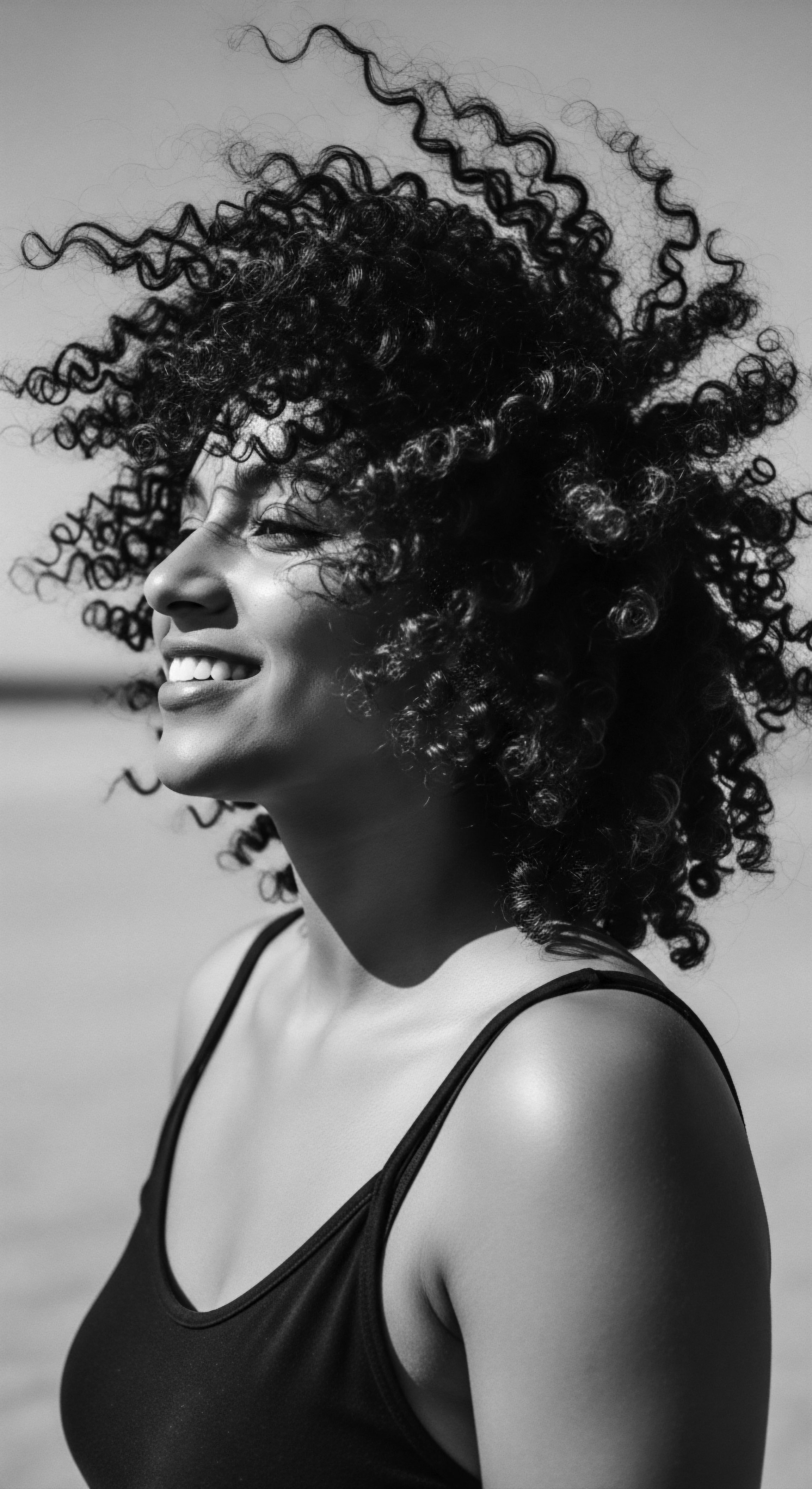
Understanding Water’s Physical Influence
The mechanical action of water, when applied to hair, aids in loosening dirt, sweat, and environmental pollutants. When paired with cleansing agents, water acts as the primary solvent, enabling these agents to effectively lather and carry away accumulated residues. Warm water, for instance, encourages the hair cuticle to lift, facilitating a more thorough cleanse by allowing shampoos and treatments to penetrate the hair shaft with greater ease. Conversely, a final rinse with cooler water helps to seal the cuticle, which promotes moisture retention and adds a natural sheen to the strands, contributing to reduced frizz and enhanced definition for various hair types, including textured patterns.
Beyond the temperature, the very composition of water plays a role in its cleaning efficacy and impact on hair. Water hardness, determined by the concentration of minerals such as calcium and magnesium, directly influences how well products perform and how hair feels after washing. Hard water, with its elevated mineral levels, can impede the lathering of shampoos and leave behind a film on the hair, causing it to appear dull and feel rough.
This mineral buildup can also prevent hair products from adequately penetrating the hair shaft, leading to dryness and potential irritation of the scalp. Soft water, conversely, contains fewer minerals, making it gentler on the hair and allowing for more effective cleansing and rinsing, often leaving hair softer and shinier.
- Warm Water ❉ Opens the hair cuticle, aiding deeper cleansing and product penetration.
- Cool Water ❉ Closes the hair cuticle, sealing in moisture and enhancing shine.
- Hard Water ❉ Contains high mineral content, potentially causing buildup, dullness, and dryness.
- Soft Water ❉ Low mineral content, allows for better product efficacy and gentler cleansing.

Intermediate
Progressing beyond the foundational understanding, the intermediate meaning of Water Cleaning delves into its nuanced applications and the historical resonance it holds for textured hair communities. This level of comprehension acknowledges that water cleaning is not a monolithic practice but rather a spectrum of techniques, often adapted from ancestral wisdom, designed to meet the specific needs of curls, coils, and kinks. It involves a deeper appreciation for how the purity, temperature, and even the source of water have historically shaped hair care traditions and continue to influence contemporary practices.

Water’s Influence on Textured Hair Structure
Textured hair, characterized by its unique curl patterns, is inherently more susceptible to dryness due to the natural oils (sebum) produced by the scalp having a more challenging path to travel down the spiraling hair shaft. This structural reality renders water an even more critical component in its care. When textured hair absorbs water, its protein structure swells.
While this can temporarily increase hair diameter and volume, excessive or prolonged swelling from frequent exposure without proper conditioning can, paradoxically, weaken the internal hair structure, making it more prone to damage and breakage. This delicate balance highlights the importance of not just applying water, but managing its interaction with the hair fiber.
The deliberate interaction of water with textured hair acknowledges both its cleansing power and its potential to influence the hair’s delicate moisture balance and structural integrity.
The application of water to textured hair is often the first step in a thorough cleansing and hydration routine. For instance, in the popular “Wash n’ Go” method for textured hair, thorough saturation with water primes the strands, making detangling easier and preparing the hair to receive subsequent moisturizing and defining products. This initial saturation is crucial, as water acts as a natural primer, enhancing the absorption of nutrients from conditioners and styling creams that follow.

Historical Echoes in Water Cleaning Practices
Throughout the history of African and diasporic communities, water cleaning practices for hair were intimately tied to resource availability, cultural beliefs, and environmental conditions. Ancestral methods often involved natural elements and careful resource management. For communities residing near rivers or rain sources, these water bodies became central to communal bathing and hair rituals.
The understanding of water’s qualities, such as its softness or hardness, was not always articulated in modern scientific terms, yet practices evolved to counteract its potential harshness. For example, some historical accounts suggest the use of clays or certain plant materials to soften water or mitigate its drying effects on hair.
| Historical/Cultural Context West African communities (e.g. Mali, Chad) |
| Traditional Water Cleaning Practice Using water in conjunction with fermented rice water or herb-infused oils (like Chebe). |
| Purpose & Connection to Hair Heritage To soften strands, promote length retention, and enhance natural shine, often as part of weekly rituals. |
| Historical/Cultural Context Ancient Egypt |
| Traditional Water Cleaning Practice Using water with oils such as castor and almond oil. |
| Purpose & Connection to Hair Heritage Protection from arid climates and encouragement of hair growth, deeply integrated into daily grooming. |
| Historical/Cultural Context Indigenous North American traditions |
| Traditional Water Cleaning Practice Creating a soapy lather by crushing yucca root and mixing it with water. |
| Purpose & Connection to Hair Heritage Natural cleansing, leaving hair nourished and cleansed without harsh chemicals. |
| Historical/Cultural Context Himba Tribe (Namibia) |
| Traditional Water Cleaning Practice Mixing water with red clay and cow fat to create a protective paste for hair. |
| Purpose & Connection to Hair Heritage Provides sun protection, aids in detangling, and forms a significant part of cultural identity and adornment. |
| Historical/Cultural Context These practices underscore how water cleaning has always been an adaptive and culturally significant element in textured hair care, evolving with available resources and ancestral wisdom. |
The scarcity or quality of water in certain regions also led to ingenious alternatives or supplements for cleaning. In arid climates, for instance, waterless cleaning methods or practices that extended the time between full washes became commonplace. This pragmatism gave rise to dry cleansing methods using powders or specific plant-based concoctions to absorb excess oil and refresh the hair. The ingenuity within these traditions points to a deep, inherited understanding of hair’s needs and water’s properties, even without formal scientific frameworks.

Academic
The academic understanding of Water Cleaning, particularly as it intersects with textured hair heritage, transcends simple definitions, entering a realm of critical analysis, bio-physical complexities, and socio-cultural implications. From an academic perspective, Water Cleaning refers to the dynamic interaction between aqueous solutions and the hair fiber and scalp, aiming to achieve optimal trichological health through the removal of exogenous substances and the maintenance of endogenous physiological balances. This rigorous interpretation acknowledges not only the chemical and physical processes at play but also the profound historical, anthropological, and psychological dimensions embedded within the act of cleansing textured hair with water. It is a process that has been continually refined and reinterpreted across generations, reflecting resilience and adaptation within Black and mixed-race communities globally.
Examining the bio-physical attributes of textured hair reveals its unique relationship with water. The helical structure of highly coiled and kinky hair types inherently limits the natural distribution of sebum from the scalp along the hair shaft. This predisposes textured hair to greater dryness compared to straight or wavy hair types. When water is applied, the hair’s outer cuticle layer, comprised of overlapping keratin scales, absorbs the water, causing the shaft to swell.
This phenomenon, known as hygral fatigue if excessive or prolonged, can compromise the integrity of the hair’s cortical cells, leading to increased porosity and susceptibility to mechanical damage. Therefore, effective Water Cleaning for textured hair involves a delicate balance ❉ providing sufficient hydration to maintain elasticity and suppleness without inducing detrimental swelling or stripping necessary natural lipids.
A deeper examination of water cleaning unveils its intricate interplay with the unique structural biology of textured hair, demanding a thoughtful balance between cleansing and preserving the hair’s intrinsic moisture and resilience.
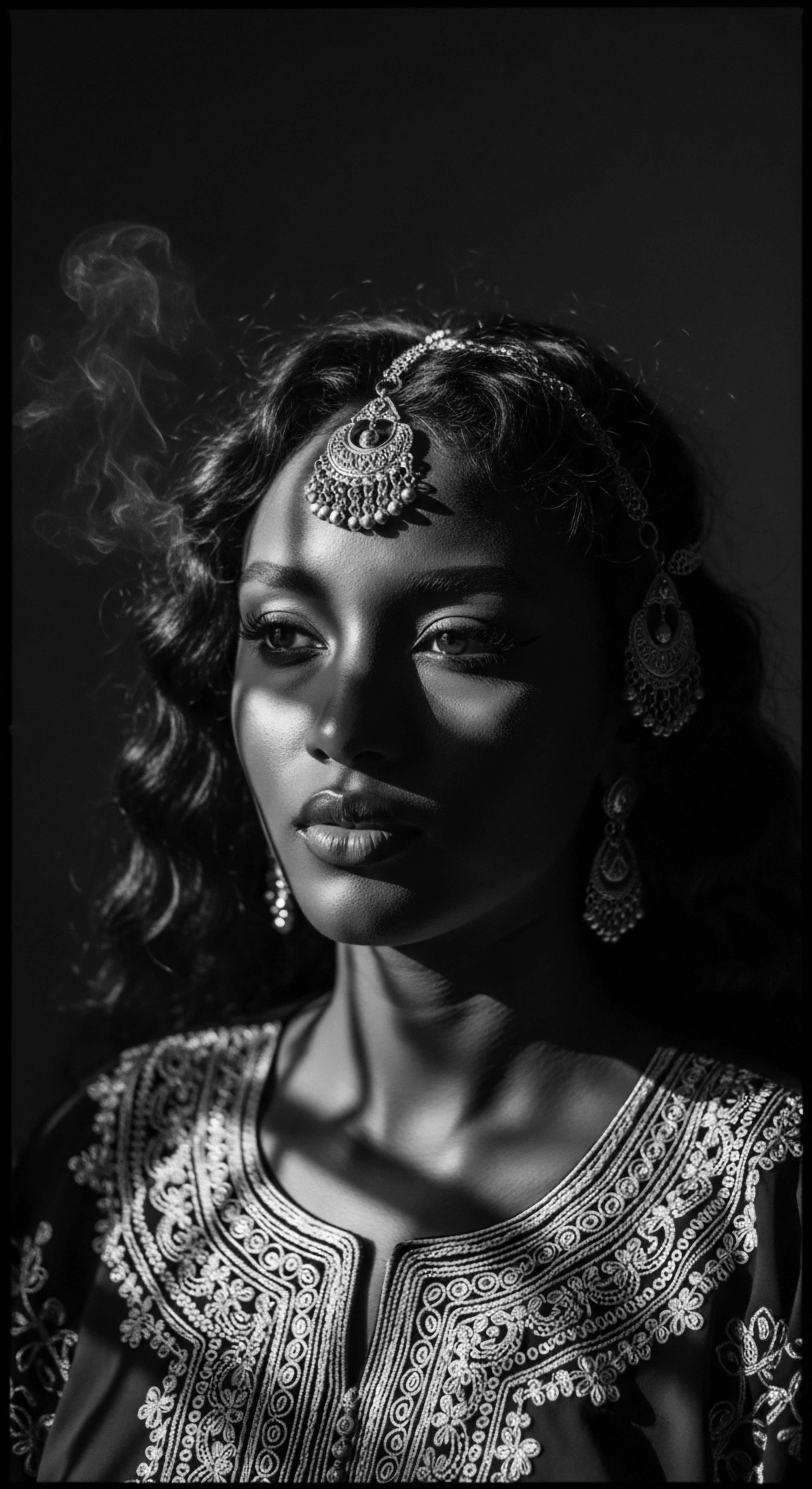
Interpreting Water Hardness and Its Diasporic Impact
The mineral content of water, specifically its hardness, represents a significant academic consideration within Water Cleaning for textured hair. Hard water, rich in divalent cations such as Ca²⁺ and Mg²⁺, reacts with anionic surfactants found in many cleansing agents, forming insoluble precipitates that accumulate on the hair shaft and scalp. These mineral deposits not only leave a noticeable film, reducing hair’s luster and manageability, but also create a physical barrier that hinders the penetration of conditioning treatments and moisturizers. For textured hair, already prone to dryness, this mineral buildup exacerbates moisture deficit, leading to increased brittleness, tangling, and a heightened risk of breakage.
Research indicates that prolonged exposure to hard water can also interfere with the scalp’s natural pH balance, potentially contributing to irritation, flaking, and even exacerbating conditions like seborrheic dermatitis. The implications of this are profound for individuals in the diaspora, particularly those who relocated from regions with soft water to areas with significantly harder water supplies. Their ancestral practices, optimized for one water profile, would need profound adaptation to sustain hair health in a new environment.
Consider the migration patterns during the Great Migration within the United States, where Black Americans moved from the rural South to urban centers in the North and West. Many Southern states, especially those with limestone bedrock, have naturally hard water. However, access to plumbing and treated water sources varied significantly. As individuals moved to industrial cities, they encountered diverse municipal water systems, some with higher levels of water hardness, alongside new environmental pollutants.
This shift necessitated a re-evaluation of hair care methods. For example, traditional practices of rinsing hair with rainwater, often collected and valued for its softness, became impractical in urban apartments. This environmental transition often forced a reliance on harsher cleansing agents to combat increased mineral and product buildup, inadvertently stripping the hair of its vital natural oils and contributing to dryness and breakage. This historical example illustrates the profound interplay between environmental factors, ancestral knowledge, and the evolving needs of textured hair care, demonstrating how even the most basic element, water, shapes the very routines of hair cleansing within a diasporic context.

Cultural and Spiritual Dimensions of Cleansing
Beyond its purely physical and chemical effects, Water Cleaning carries deep cultural and spiritual resonance within Black and mixed-race hair heritage. Water itself is often considered a sacred element, associated with purification, renewal, and ancestral connection across numerous African spiritual traditions and their diasporic expressions. The act of washing hair, therefore, frequently transcends mere hygiene; it becomes a ritualized practice imbued with intention, serving as a conduit for self-care, communal bonding, and a reaffirmation of identity.
The Yoruba concept of “Ori,” or the spiritual head, for example, emphasizes the head as the seat of one’s destiny and consciousness. Cleansing the hair and scalp is not only about physical cleanliness but also about clearing spiritual blockages and honoring one’s destiny. This perspective highlights how Water Cleaning is integrated into a holistic worldview where the physical body is inextricably linked to spiritual well-being.
The use of specific natural ingredients alongside water, such as black soap (an ancestral cleanser from West Africa) or herbal infusions, further underscores this connection, each ingredient carrying its own symbolism and traditional medicinal properties. These practices affirm that water cleaning is a performative act of honoring the self and ancestral lineage.
A pivotal insight from anthropological studies on African hair practices suggests that while modern notions of “curl definition” dominate contemporary textured hair care, many ancestral practices prioritized length retention and protective styling over visible curl pattern. This distinction profoundly impacts the understanding of Water Cleaning. If the goal is length retention within protective styles (like braids or twists), then the immediate absorption of water that leads to curl definition (as in a “wash and go”) might be secondary to ensuring the hair remains moisturized and strong over extended periods.
This might explain the historical use of heavier oils and butters in some African communities (such as the Himba tribe’s mixture of clay and cow fat or the Basara tribe’s Chebe mixture), which, while potentially hindering water absorption for curl definition, provided a protective barrier against environmental elements and minimized breakage. This perspective challenges conventional Western trichological assumptions by demonstrating that ancestral Water Cleaning practices were tailored to different, equally valid, hair health outcomes, deeply rooted in cultural context and environmental realities.
The contemporary “water-only washing” (WOW) method, gaining traction in some natural hair communities, serves as a modern echo of this ancestral pragmatism, though its efficacy for all textured hair types remains a subject of ongoing discussion. This method posits that regular, thorough water rinsing, combined with scalp massage to distribute natural sebum, can adequately cleanse and condition hair without external products. While some trichologists raise concerns about water alone’s ability to remove stubborn buildup, the philosophical underpinning resonates with ancient approaches that relied on the hair’s inherent self-regulating mechanisms and the cleansing power of pure water. This continuity illustrates a cyclical return to elemental understanding, filtered through contemporary insights, yet always connected to a deep ancestral respect for the body’s natural capacities.
- Hydration and Humectants ❉ Water as a hydrator requires humectants and emollients to prevent rapid evaporation and maintain moisture within textured hair.
- PH Balance ❉ Water’s pH affects the hair cuticle; optimal pH helps keep cuticles smooth and hair healthy.
- Mineral Buildup ❉ Hard water deposits minerals, obstructing product efficacy and increasing dryness in textured hair.
- Chlorine Impact ❉ Disinfectants in tap water can strip natural oils, affecting color and moisture in textured hair.
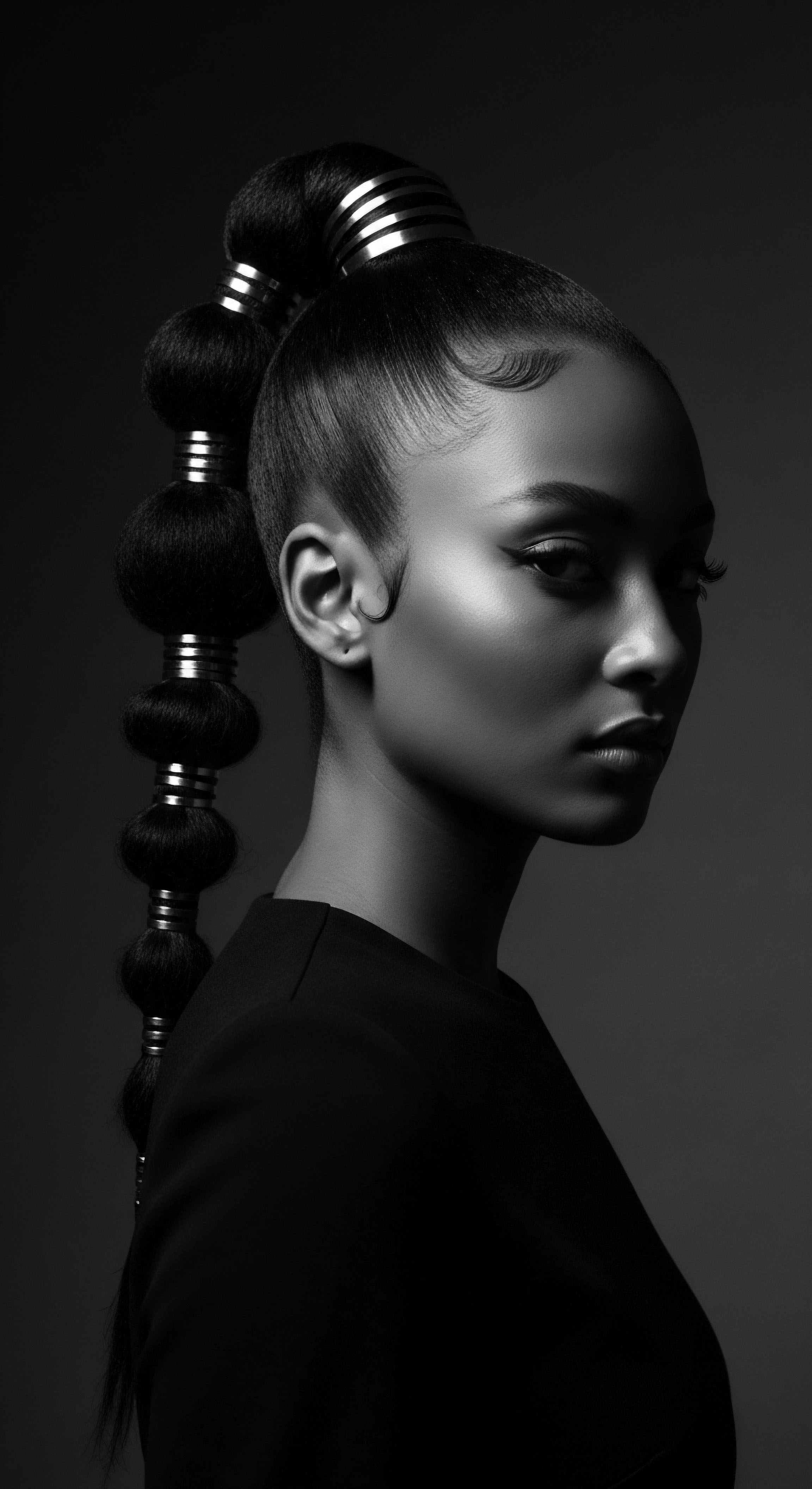
Reflection on the Heritage of Water Cleaning
The journey through the interpretation of Water Cleaning, from its fundamental physical actions to its intricate academic and cultural meanings, culminates in a profound appreciation for its enduring heritage within the narrative of textured hair. It becomes clear that water is not merely a utility for cleansing; it is a primal thread woven through generations of Black and mixed-race hair traditions, a silent witness to resilience, innovation, and self-expression. The act of cleansing hair with water carries the echoes of ancestral hands tending to coils under open skies, of ingenuity in adapting to new landscapes, and of a continuous dialogue between the body and the elements.
The intimate connection between water and textured hair speaks to a deeper wisdom, acknowledging that the care of one’s crown is an inherent part of one’s holistic well-being. It is a testament to the way communities have historically honored their hair, not as a superficial adornment, but as a living extension of self and spirit. The lessons gleaned from past practices, whether through the conscious softening of water, the intentional pairing of water with botanicals, or the understanding of its rhythmic application, continue to inform and inspire contemporary approaches to textured hair care. These ancestral understandings remind us that genuine hair health is cultivated through mindful interaction with foundational elements, respecting the inherent nature of our strands.
As we gaze towards the future, the heritage of Water Cleaning serves as a guiding light. It encourages us to look beyond fleeting trends and reconnect with the elemental wisdom passed down through our lineages. Understanding water’s profound and multifaceted impact on textured hair invites a deeper, more reverent engagement with our hair care rituals, allowing us to not only cleanse and nourish our strands but also to honor the rich legacy they carry. The story of water cleaning, in essence, becomes a part of the larger, vibrant narrative of textured hair, perpetually reaffirming its sacred place within identity and tradition.
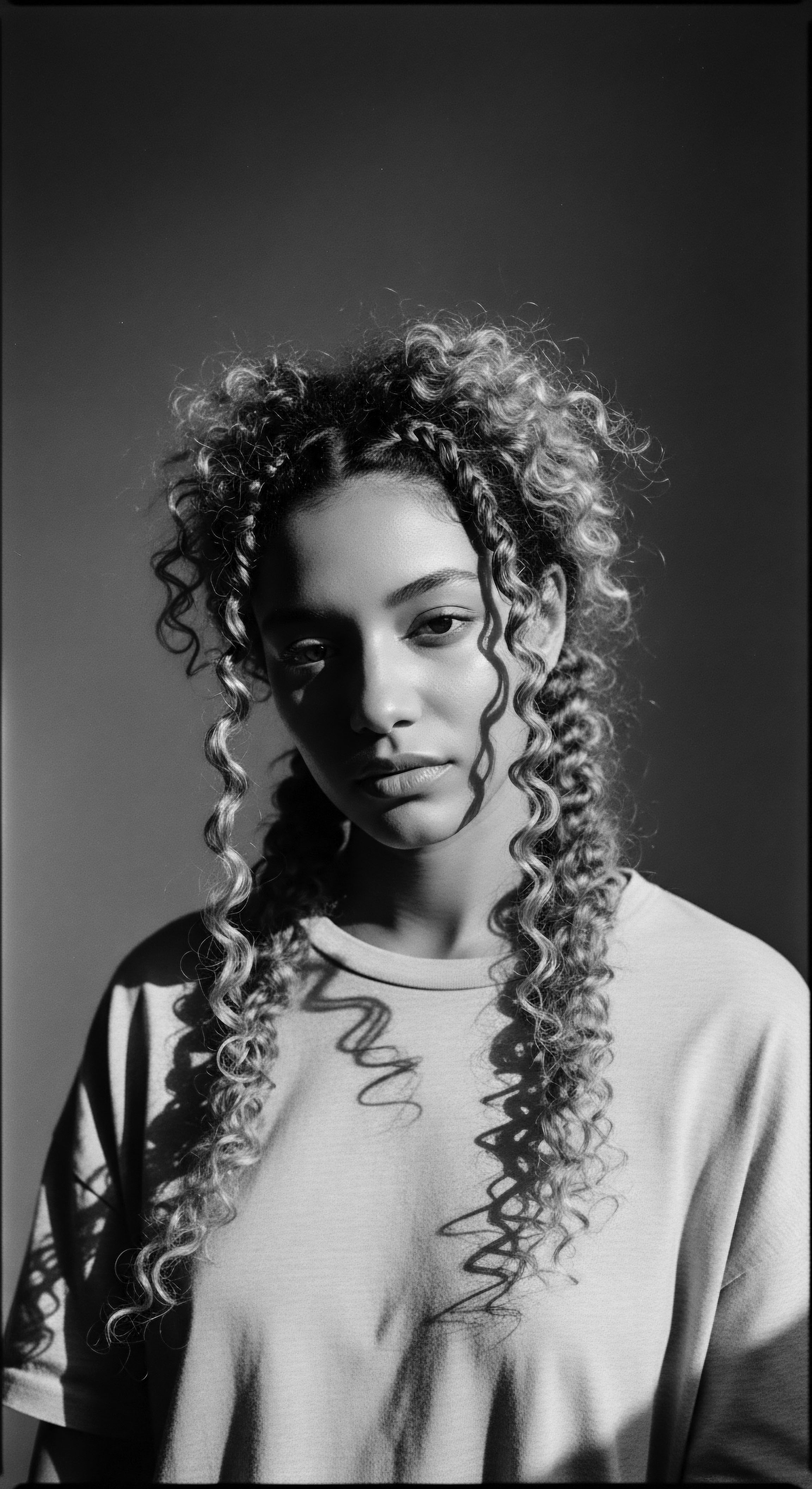
References
- Nanoil United States. “Wonderful Power of the Elements – Water & Hair Care.” Blog Nanoil United States, n.d.
- Obé Headwear. “How water affects different hair types | Essential hair care tips | Obé | Blog.” Obé Headwear, September 4, 2024.
- Kinetico San Antonio. “4 Ways Drinking Water Improves Hair Growth.” Kinetico San Antonio, n.d.
- Septième. “Unveiling the Effects of Water on Hair and Scalp.” Septième, n.d.
- MHR Clinic UK. “The Links Between Proper Hydration And Healthy Hair | MHR Clinic UK | Hair Transplants in Manchester and Harrogate.” MHR Clinic UK, November 3, 2023.
- The Independent Pharmacy. “Hot Vs. Cold Water ❉ Which Is Better For Your Hair?” The Independent Pharmacy, n.d.
- RHRLI. “6 Ways Drinking Water Improves Hair Growth.” RHRLI, n.d.
- Cameo College of Essential Beauty. “Understanding Hard Water ❉ How It Affects Your Hair.” Cameo College of Essential Beauty, December 14, 2024.
- CLOUD NINE. “The Importance of Hair Hydration | CLOUD NINE.” CLOUD NINE, January 12, 2024.
- “Hair Care Practices from the Diaspora ❉ A Look at Africa, America, and Europe.” n.d.
- Black Women Radicals. “How Naturals In And Outside The U.S. Maintain What’s On And In Their Crown During A Pandemic.” Black Women Radicals, May 20, 2020.
- Reddit. “No raw oils and butters vs. Traditional African hair care?” r/Naturalhair, August 26, 2021.
- “Wash N’ Go – for textured hair.” n.d.
- “The Water Only Washing Method For Natural Hair.” n.d.
- Mane Addicts. “I Tried Water Only Hair Washing on My Natural Hair and Loved It.” Mane Addicts, January 5, 2023.
- Carmesi. “7 Ancient Ways To Wash And Condition Your Hair.” Carmesi, May 19, 2022.
- 22 Ayur. “The Ancient Natural Ways of Hair Care Across Continents.” 22 Ayur, n.d.
- Flora & Curl. “Hot vs. Cold Water ❉ Which One Is Better For Your Natural Hair?” Flora & Curl, n.d.
